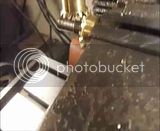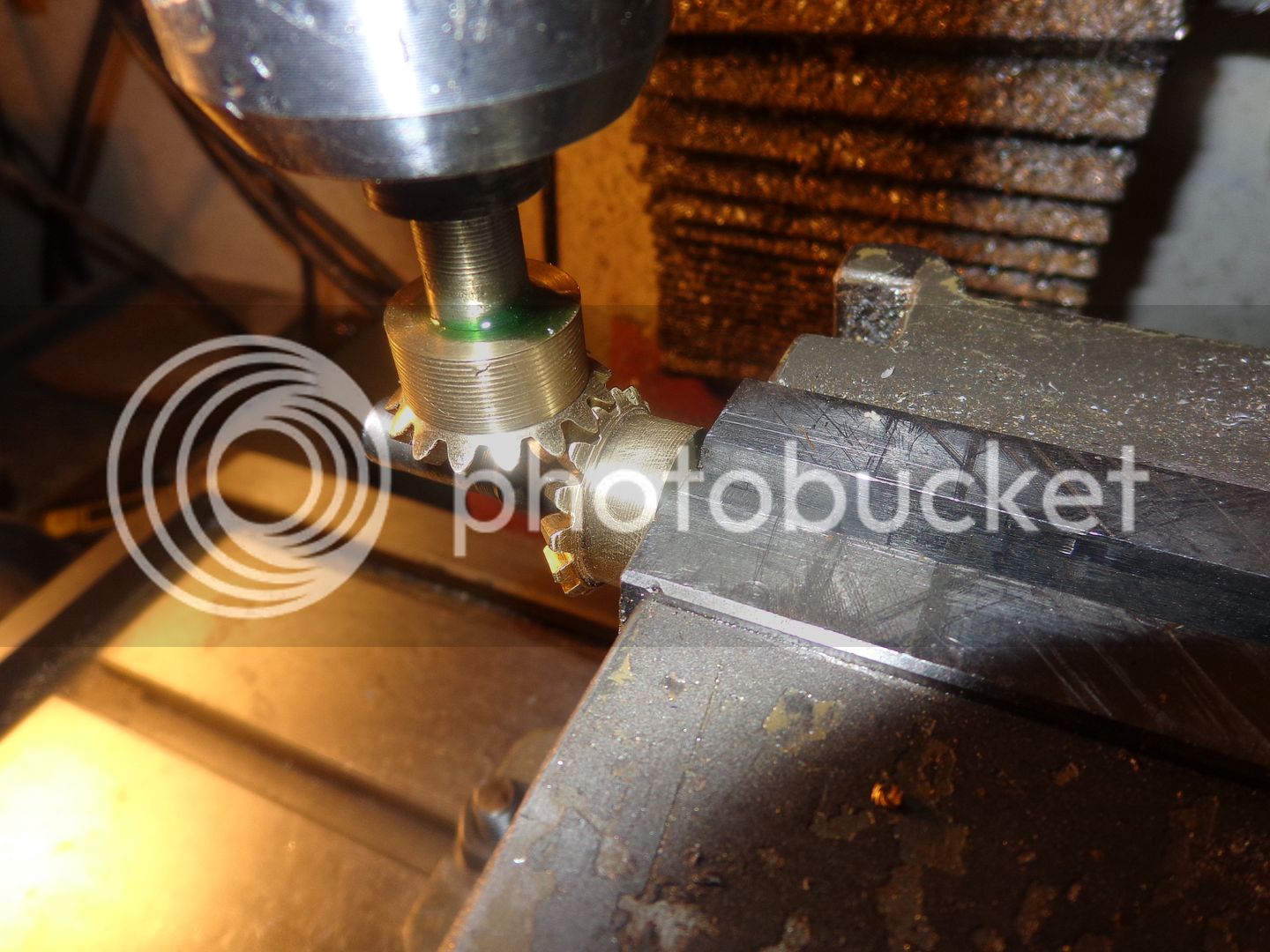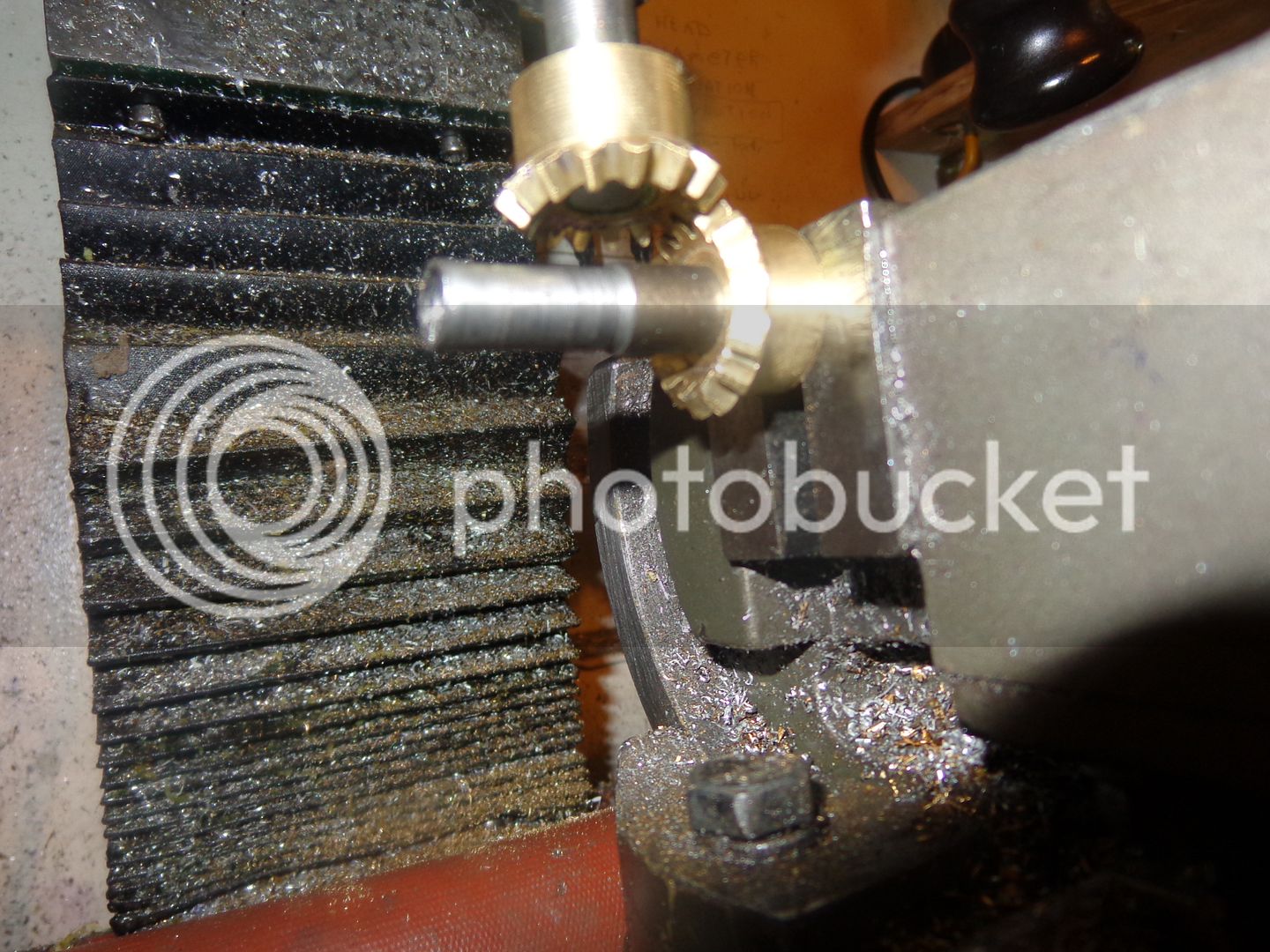Swifty
Well-Known Member
Hi Brian, I'm just having my breakfast down here and reading all your latest posts. Now you know why I had to read Ivan Laws book about 4 times before I started to get my head around everything, and then I had to work with the module gear system.
You seem to have everything worked out correctly, now you can see why my earlier comment on choosing the correct dividing plate is important, an odd hole pattern will not allow you to get the 1 1/2 turn, even though it would have been OK for the main cuts.
You are now well on your way to cutting the gears, the only hard part left is when you do your second and third cuts, make sure that you cut on the correct side of the tooth. Ivan Law had a formula for working out the table rise and fall, I gave up at this stage and just adjusted the table so the cutter entered the small end of the gap precisely.
Paul.
You seem to have everything worked out correctly, now you can see why my earlier comment on choosing the correct dividing plate is important, an odd hole pattern will not allow you to get the 1 1/2 turn, even though it would have been OK for the main cuts.
You are now well on your way to cutting the gears, the only hard part left is when you do your second and third cuts, make sure that you cut on the correct side of the tooth. Ivan Law had a formula for working out the table rise and fall, I gave up at this stage and just adjusted the table so the cutter entered the small end of the gap precisely.
Paul.





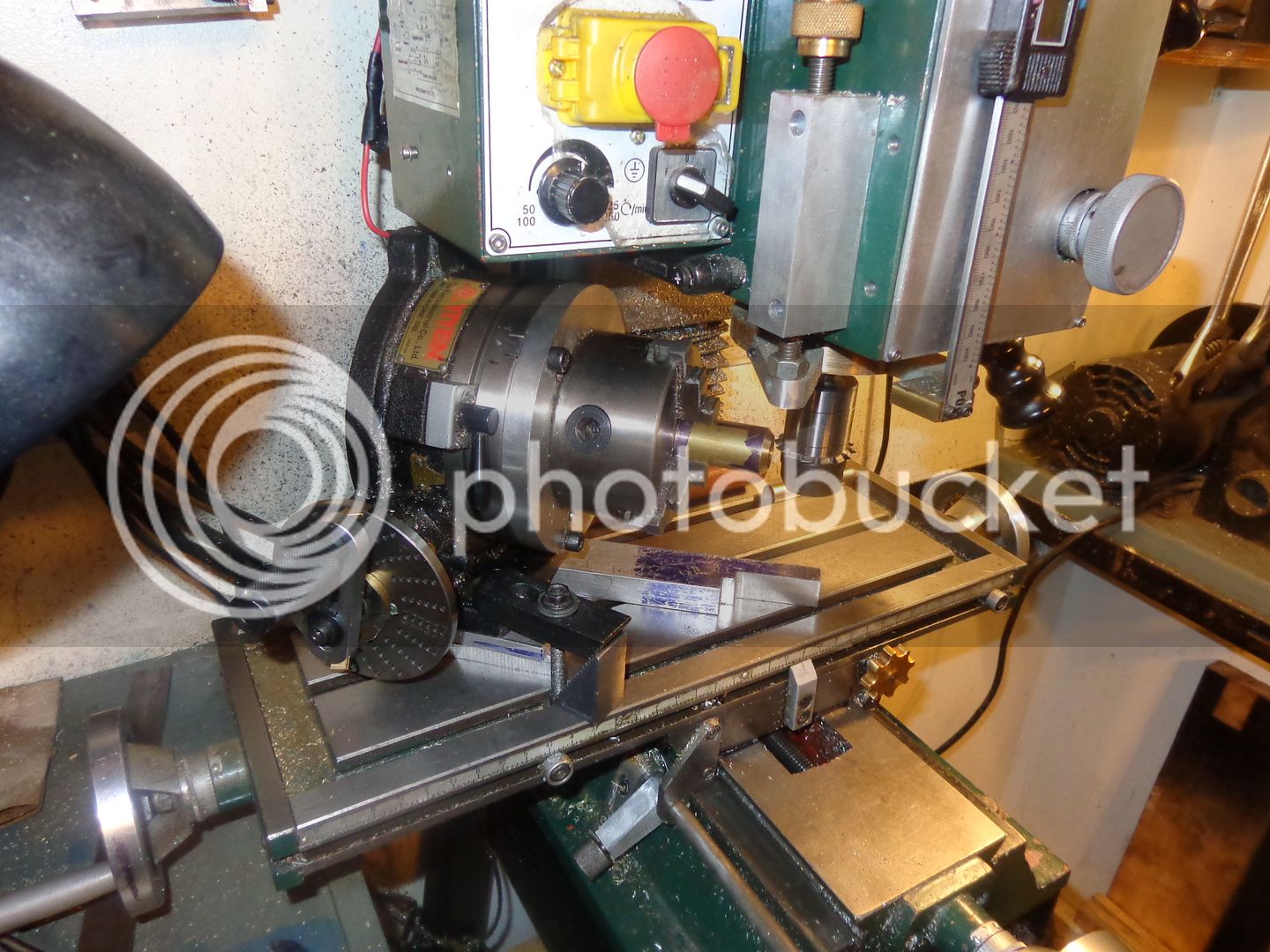
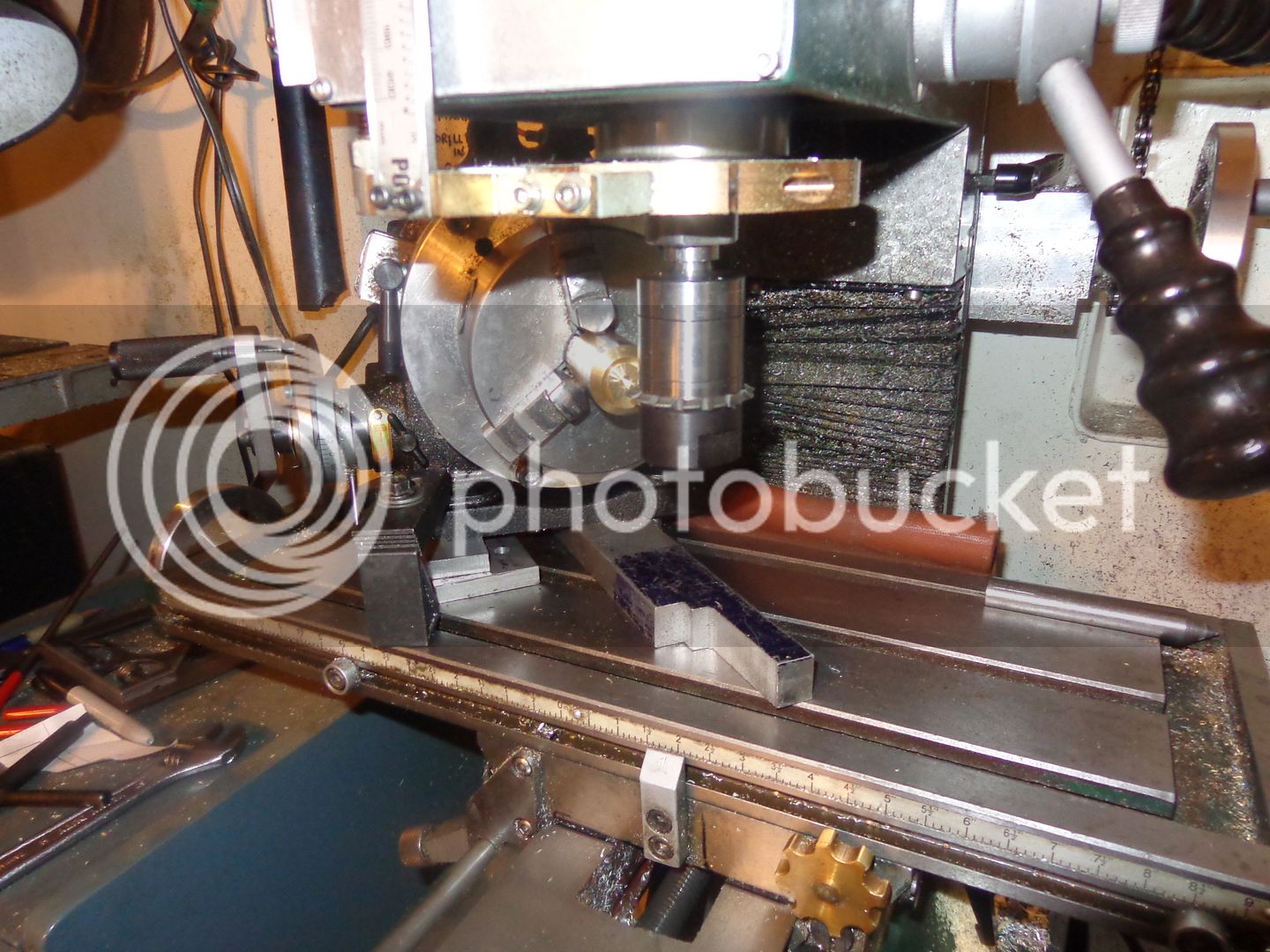
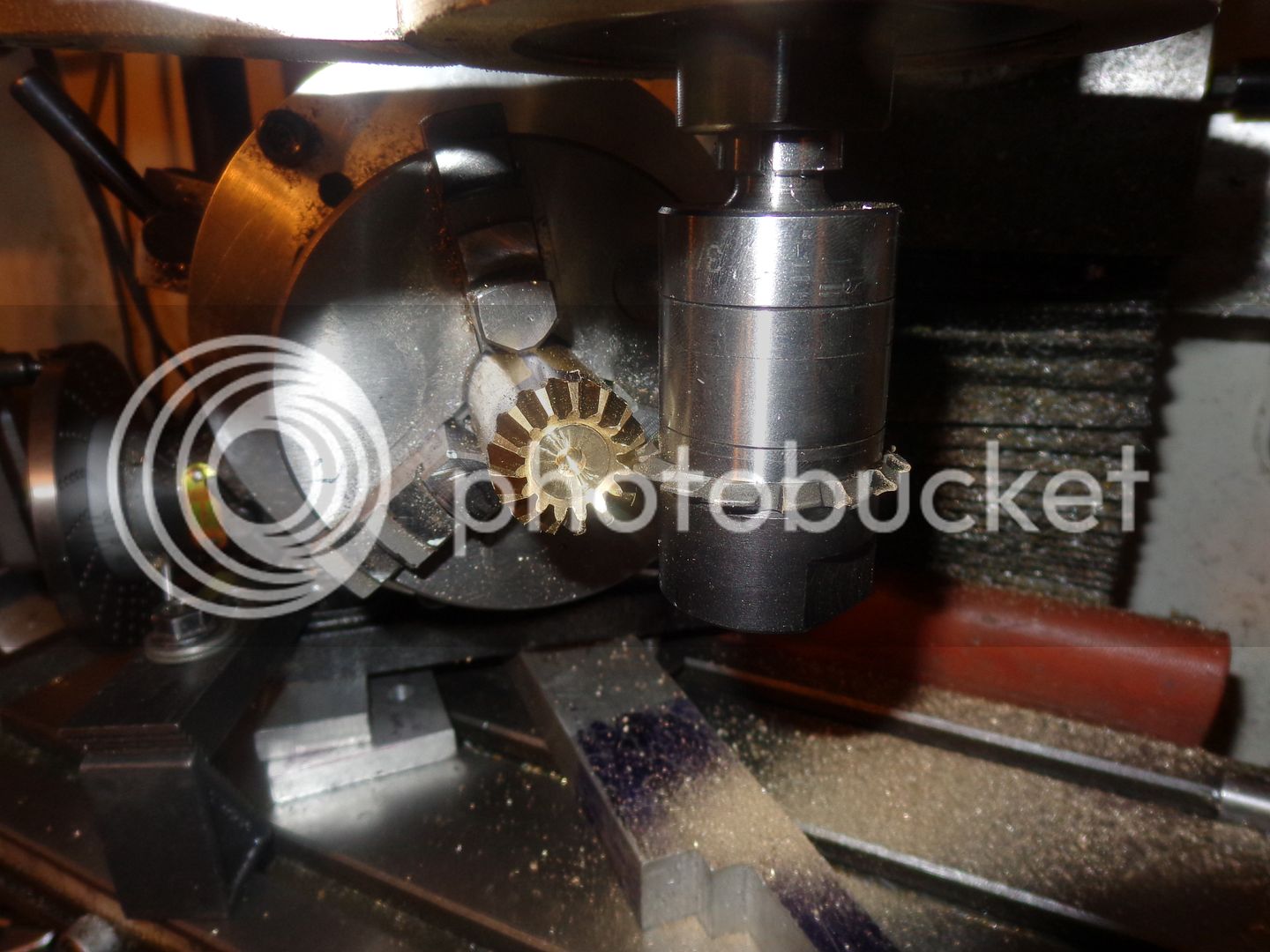
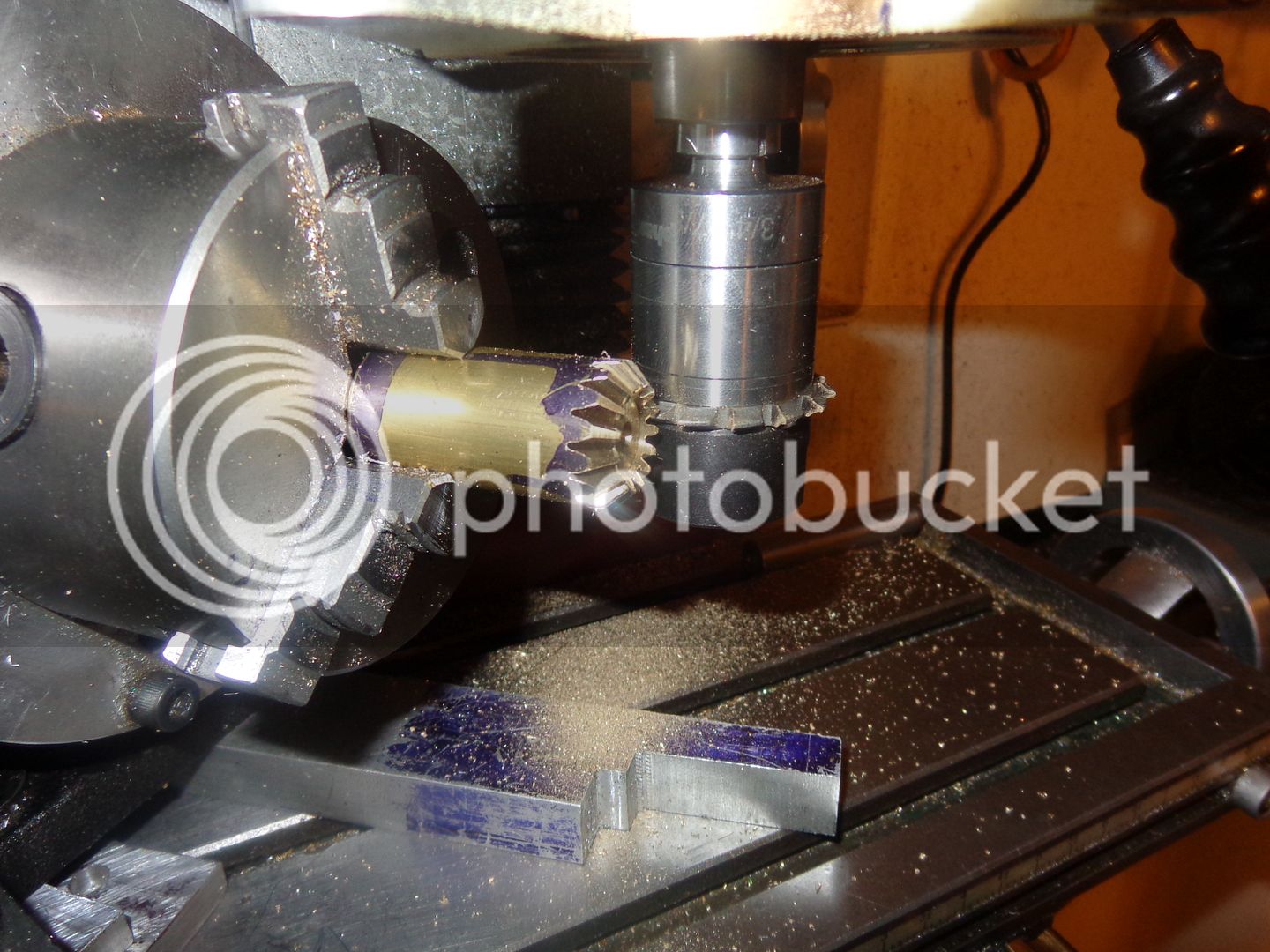
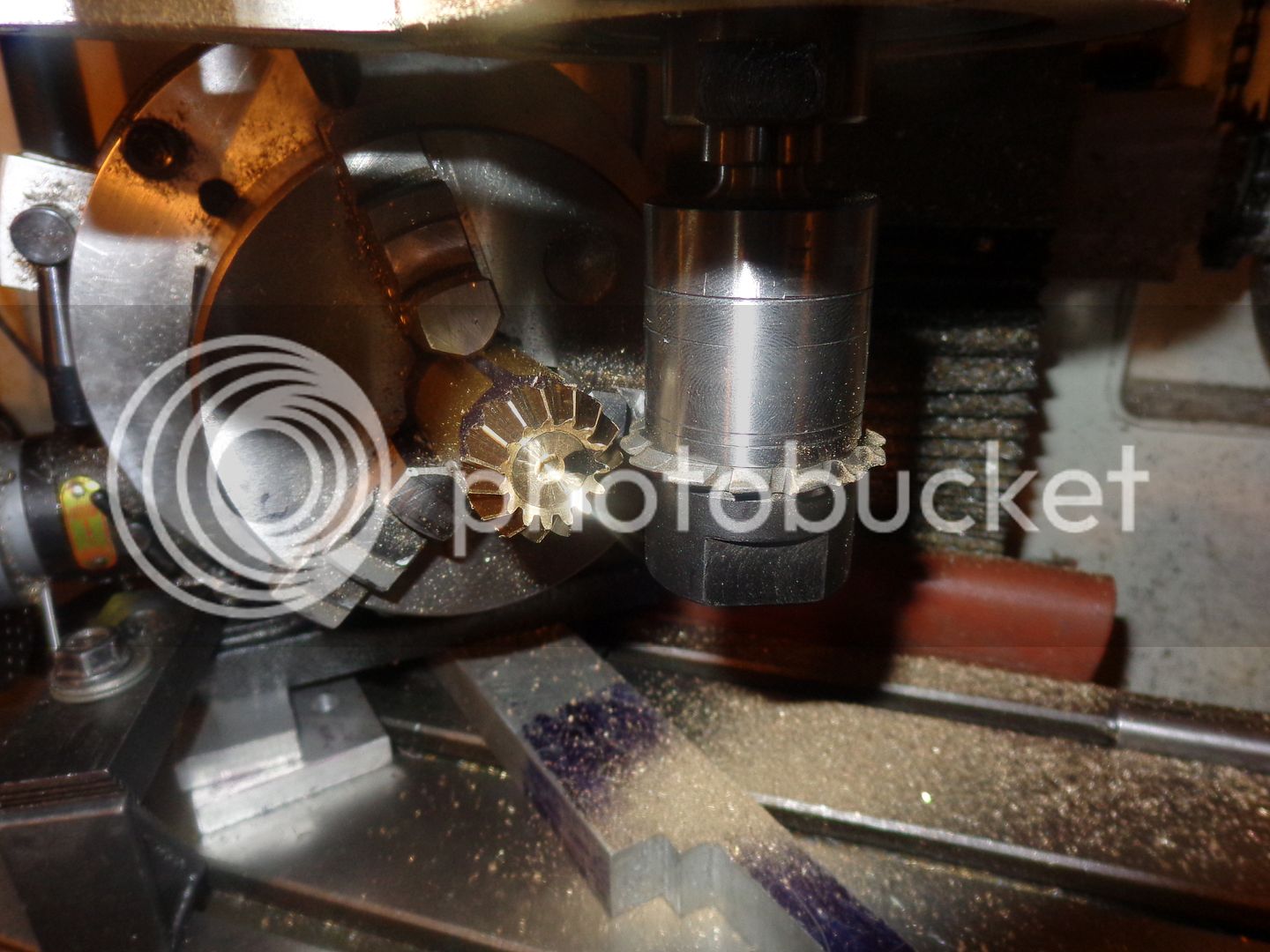
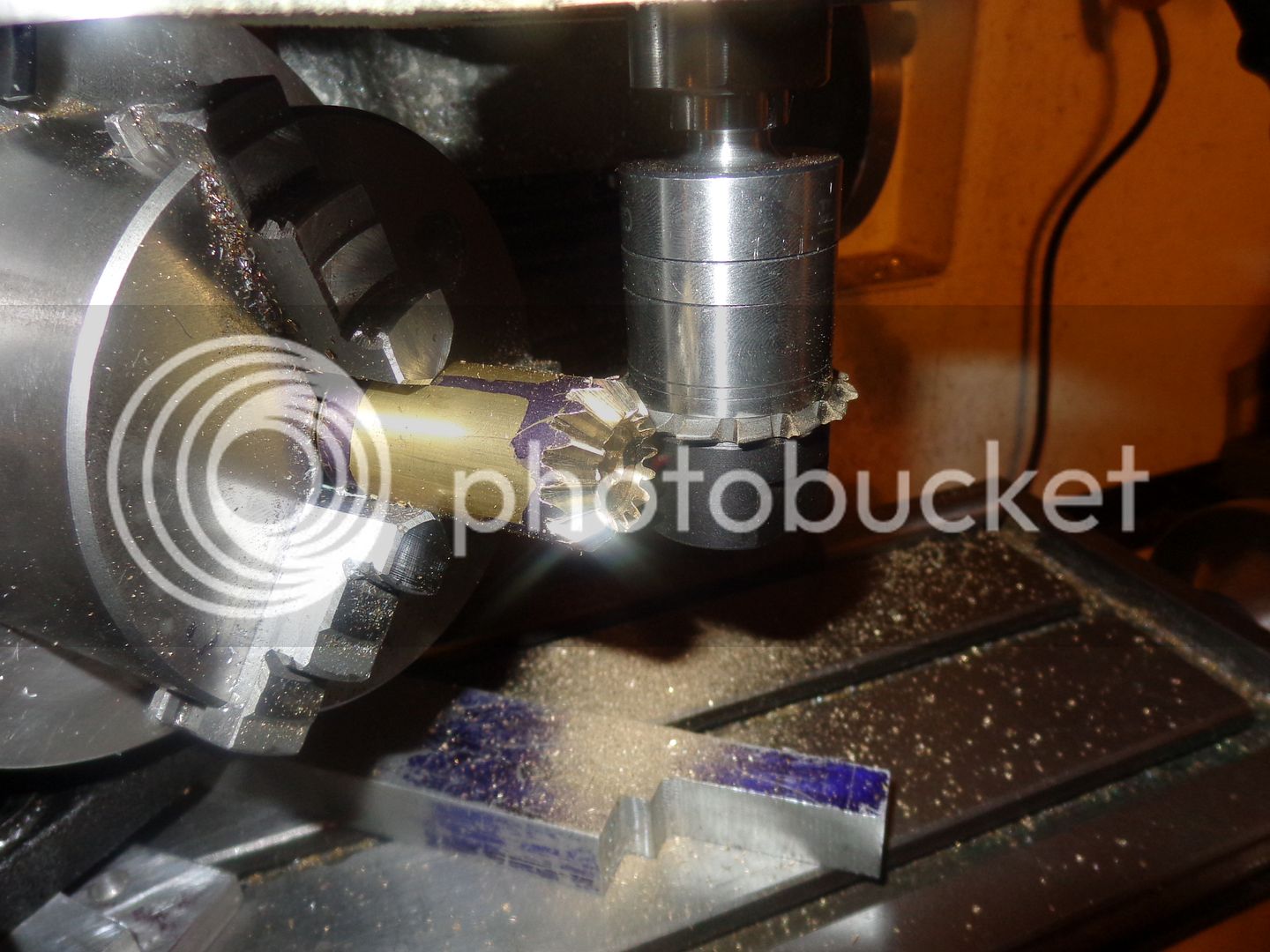
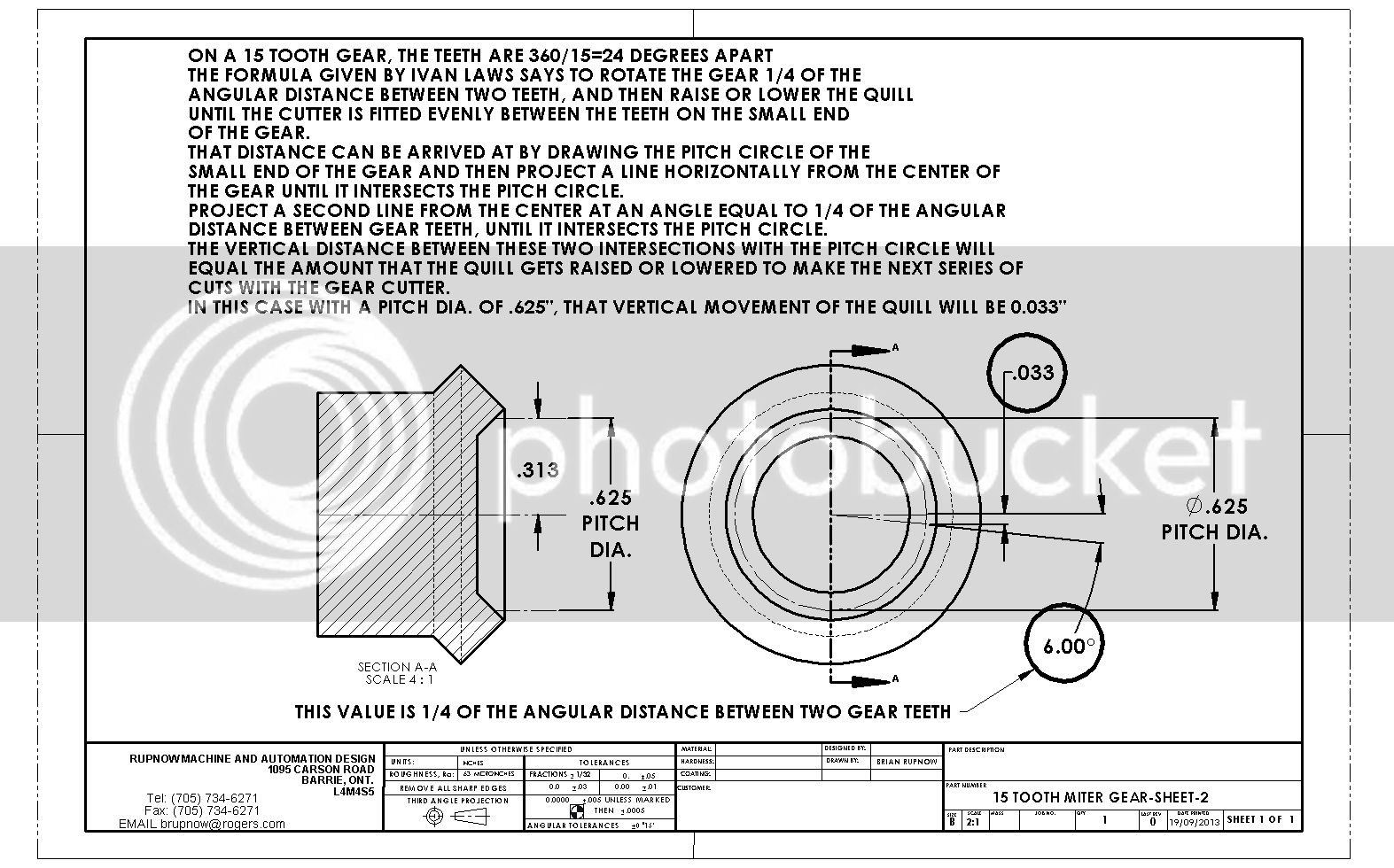










![TurboCAD 2020 Designer [PC Download]](https://m.media-amazon.com/images/I/51UKfAHH1LL._SL500_.jpg)












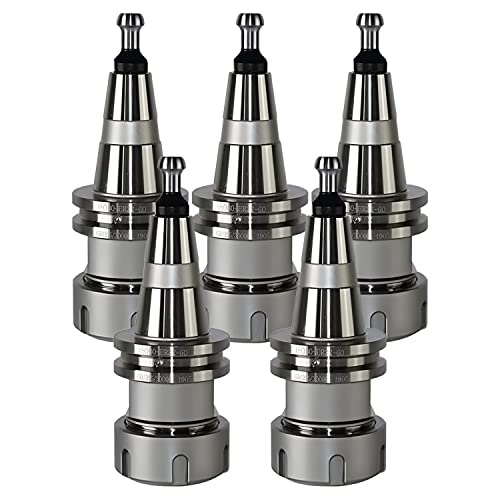





















![DreamPlan Home Design and Landscaping Software Free for Windows [PC Download]](https://m.media-amazon.com/images/I/51kvZH2dVLL._SL500_.jpg)


















